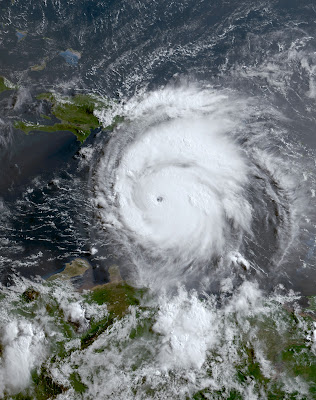18 cyclones attaining tropical depression status,
18 cyclones attaining tropical storm status,
11 cyclones attaining hurricane status, and
5 cyclones attaining major hurricane status.
Before the beginning of the season, I predicted that there would be
24 cyclones attaining tropical depression status,
22 cyclones attaining tropical storm status,
12 cyclones attaining hurricane status, and
6 cyclones attaining major hurricane status.
The average numbers of tropical storms, hurricanes and major hurricanes (over the 30 year period 1991-2020) were 14.4, 7.2, and 3.2, respectively. The eventual numbers for 2024 fell short of my predictions for a historically active season, but the (preliminary) Accumulated Cyclone Energy value for 2024 was 162, enough to qualify as a "hyperactive" season, since it exceeded 165% of the median for hurricane seasons since 1950. Most predictions for the 2024 season were extremely high due to several favorable pre-season indicators. The main reason the true activity didn't quite reach this ceiling was an anomalous gap in storm formation near peak season; this will be discussed further below.
The most basic requirement for hurricane formation is warm ocean water. 2024 had this in spades.
A majority of the tropical Atlantic, Caribbean, and Gulf of Mexico experienced its warmest hurricane season on record. This is of course part of the worrying trend of climbing ocean temperatures globally due to anthropogenic global warming, but previous recent seasons had also seen very high ocean temperatures. The difference this year was where they were concentrated: the highest anomalies were in the heart of the main formation regions, rather than in the subtropical Atlantic.
During the heart of hurricane season, the average vertical wind shear was the lowest on record; since shear disrupts tropical cyclone formation, this also should contribute to higher activity. Both high ocean temperatures and low wind shear were well anticipated, hence the sky-high forecasts. And indeed, 2024 got off to a roaring start, with Hurricane Beryl became the most powerful hurricane ever recorded so early in a season. After the formation of Ernesto on August 13, however, no more storms were named until September 9, nearly a month-long gap. Since the climatological peak of hurricane season is mid-September, this was very unusual. As a point of comparison, the last time no named storms formed in that span of dates was 1968. After September 9, things switched to high gear again for the rest of hurricane season. For instance, 7 hurricanes formed on or after September 25, the first time this has ever happened on record. What happened in that gap?
A few factors likely contributed, but the main reason was that hurricane activity was cut off at the spigot, in a way: the north African monsoon shifted unusually far north. This caused tropical waves entering the Atlantic to quickly curve rightward into cooler and more stable environments. Meanwhile, dry air and high upper-level atmospheric temperatures over the tropical Atlantic quelled thunderstorm activity, making it difficult for disturbances to gain a foothold on the way to development. In short, tropical cyclone formation is complex; even when a couple factors are extremely favorable, other ingredients are still needed.
The following snapshot on October 6 highlights how busy that month was. Kirk (top right), Leslie (bottom right), and Milton (left) were all hurricanes simultaneously on that day. This was the first time such an occurrence had been recorded in October or later.
As far as more localized predictions go, land impacts were most common around the Gulf of Mexico, while U.S. east coast and greater Antilles impacts were somewhat less than I predicted. Unfortunately, a total of five hurricanes made landfall in the conintental United States, continuing a recent streak of bad hurricane seasons for the country. The most devastating of these was Hurricane Helene, which due to its size and strength caused widespread damage in the U.S. southeast and southern Appalachia, leading to the largest death toll in the mainland U.S. since Hurricane Katrina. Hurricane Milton also caused substantial damage in Florida, and was notable for being the strongest hurricane by minimum pressure since 2005, with a minimum central pressure of 895 mb.
Some other notable facts and figures from 2024 include:
- Beryl became the earliest category 4 and later the earliest category 5 recorded in the Atlantic; it also became the second southermost major hurricane formation, at 10.6° N
- Kirk became the easternmost forming hurricane in the tropical Atlantic after September, at 40.1° W, until this record was crushed immediately after by Leslie at 34.2° W
- Milton strengthened from a tropical depression to a category 5 hurricane in 49 hours, the fastest this had ever been observed
- Rafael was the second ever November major hurricane in the Gulf of Mexico on record
The 2024 hurricane season was very active and damaging, despite slightly underachieving statistically relative to pre-season predictions. Sources: https://yaleclimateconnections.org/2024/12/the-weirdly-hyperactive-2024-atlantic-hurricane-season-ends/, https://newsmediarelations.colostate.edu/2024/11/26/csu-researchers-slightly-over-predict-extremely-active-2024-atlantic-hurricane-season/,









































